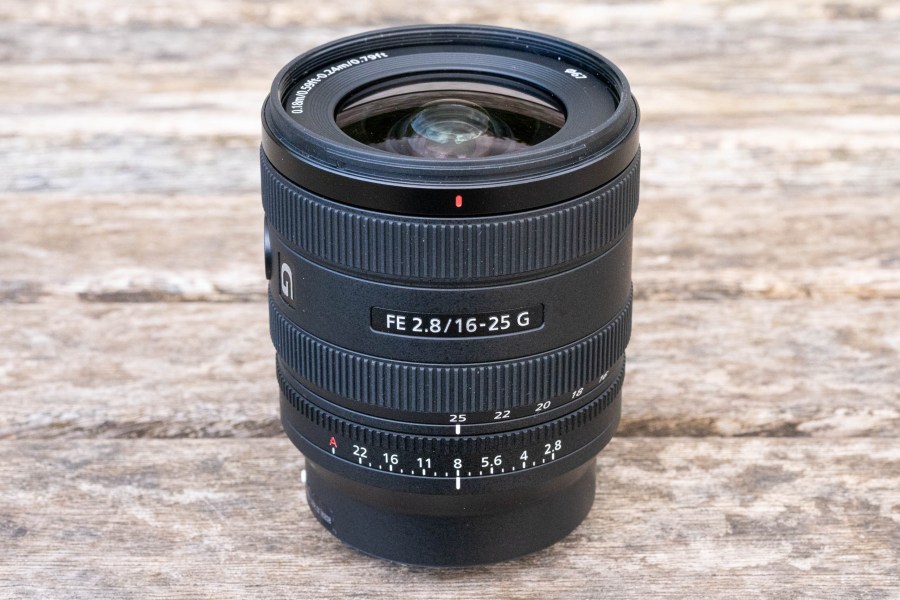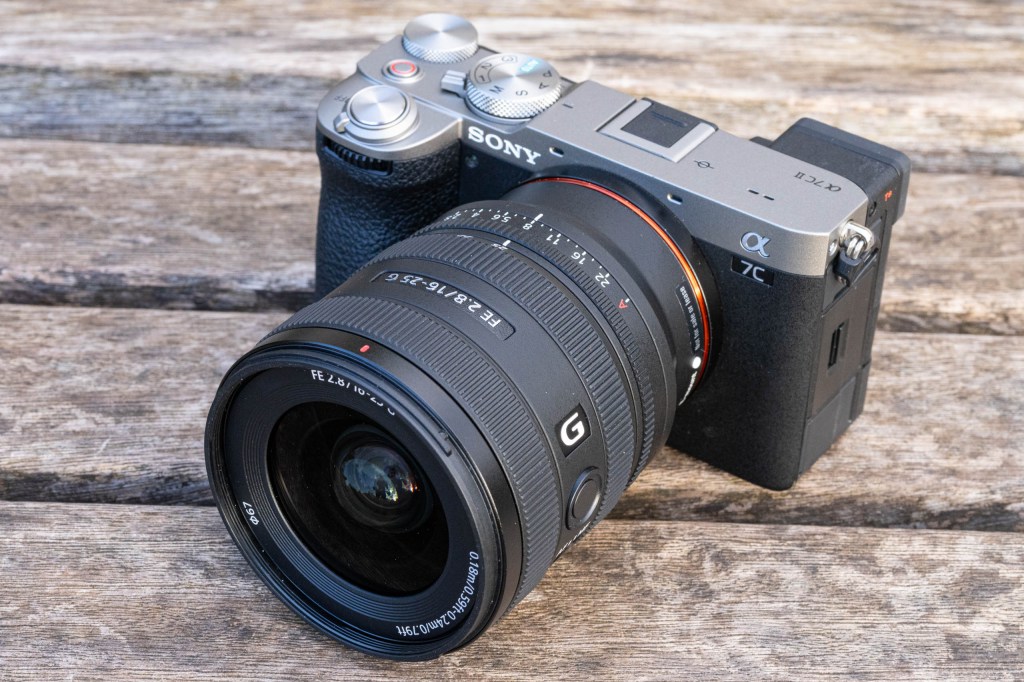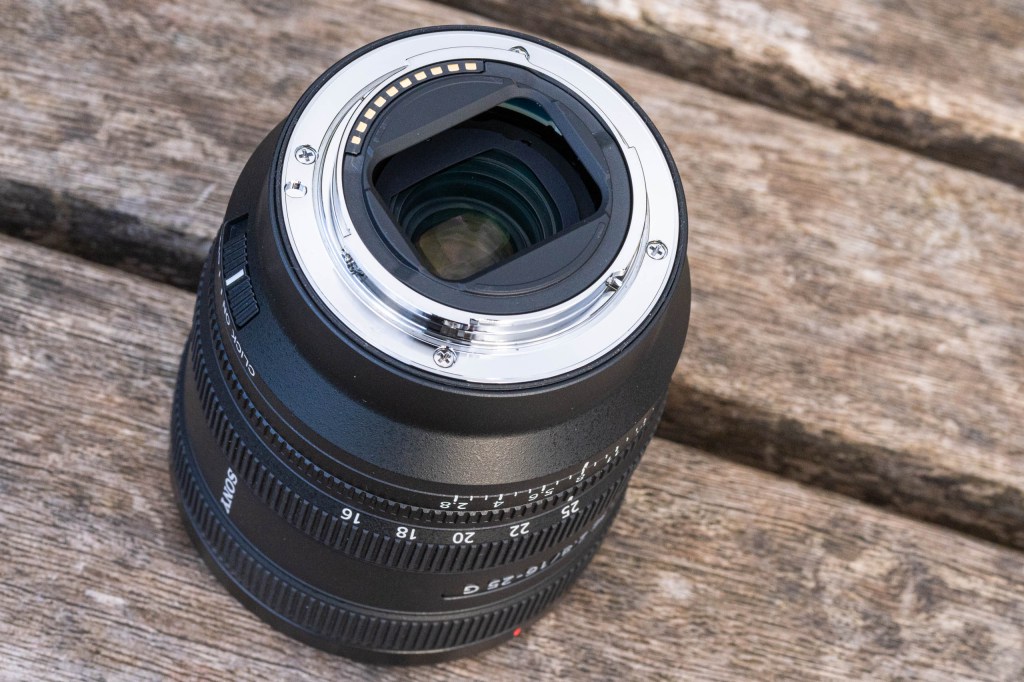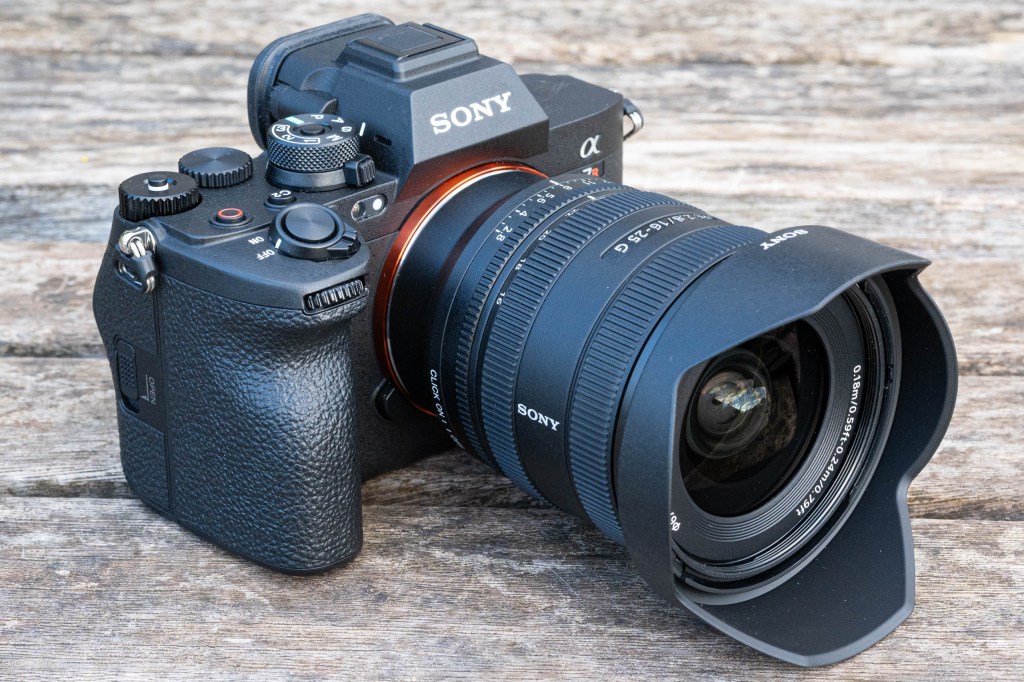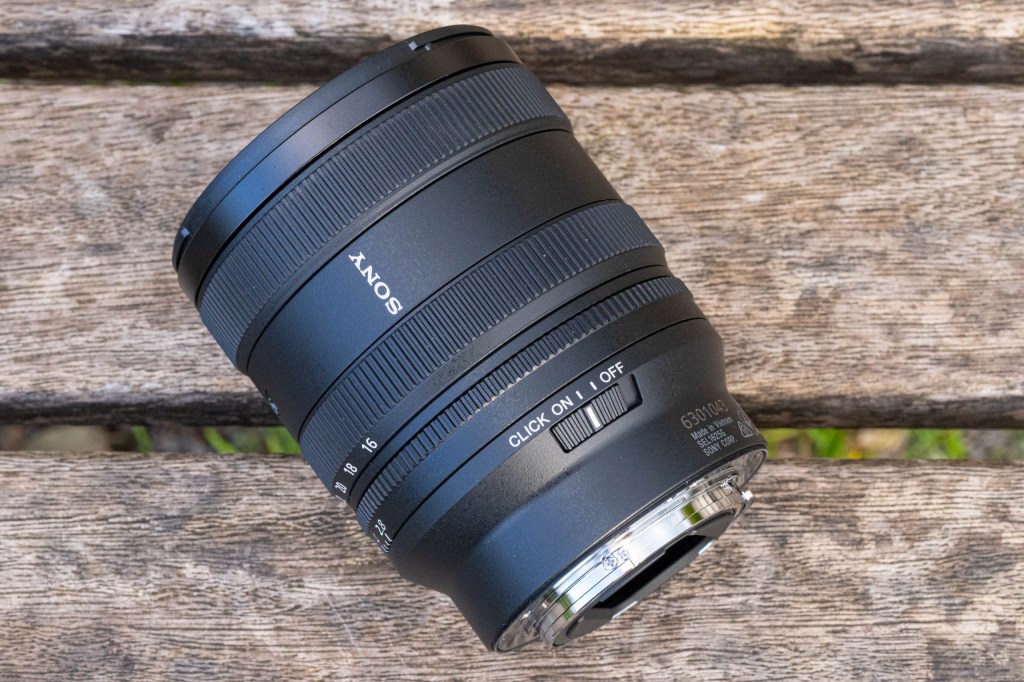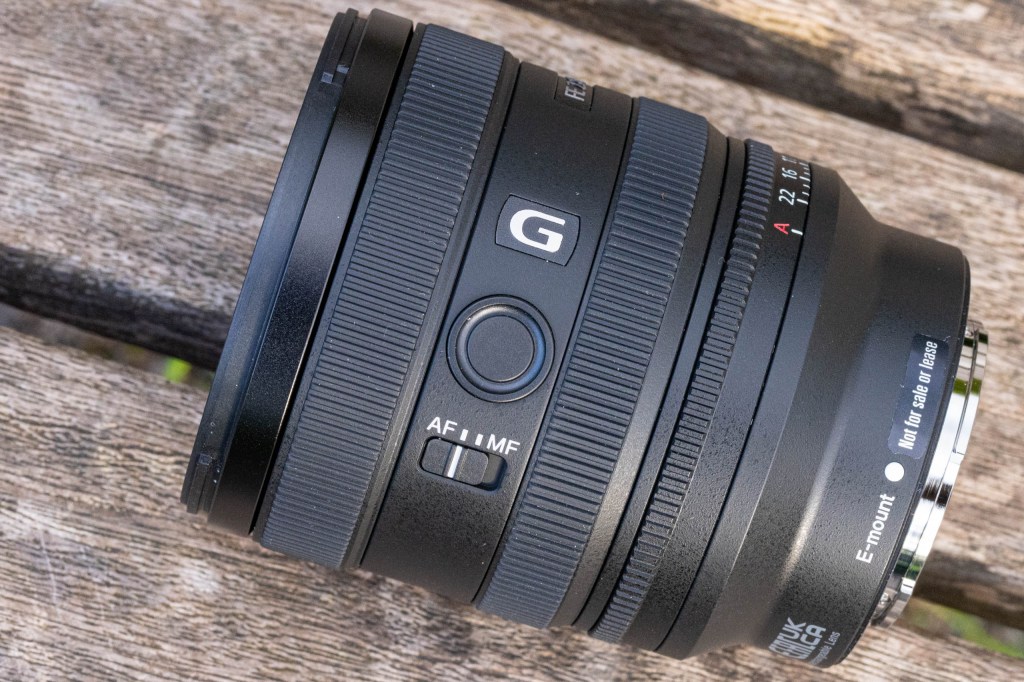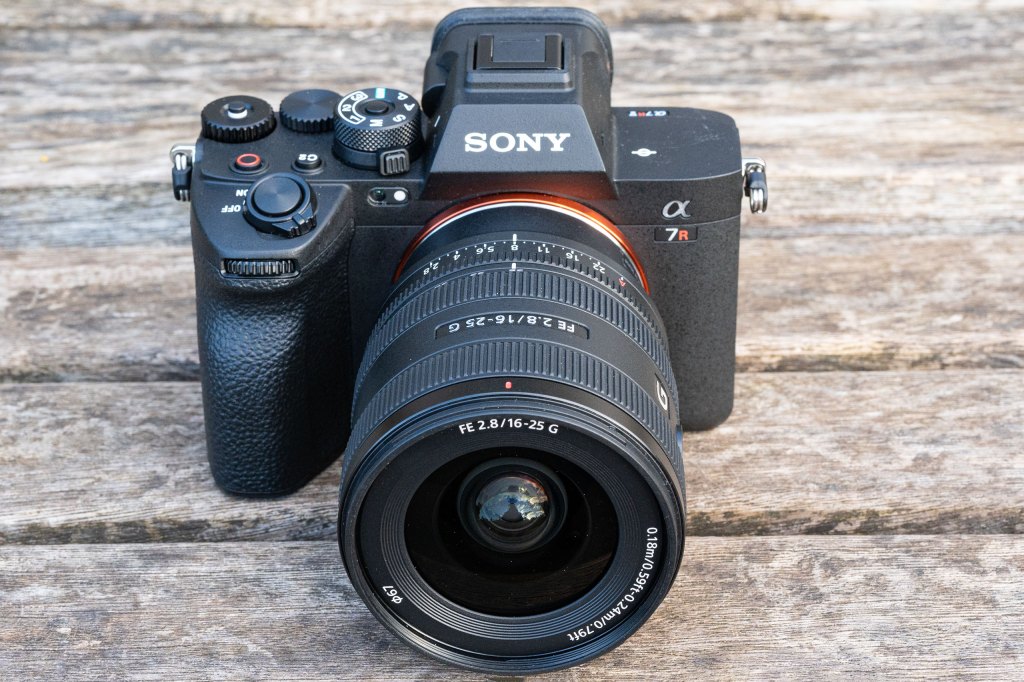Amateur Photographer verdict
This wideangle zoom delivers excellent images in a relatively portable package. But the short zoom range is creatively limiting and it’s expensive compared to third-party alternative- Impressively sharp at all settings
- Relatively compact and lightweight
- Built-in aperture ring
- Fast and silent focusing
- Weather sealed construction
- Very limited zoom range
- High price compared to third-party alternatives
Over the past few years, we’ve seen the camera market shift heavily towards full-frame mirrorless systems. But there’s also a clear demand from users for smaller, lighter lenses. With the Sony FE 16-25mm F2.8 G, Sony has aimed to address this by delivering an ultra-wideangle zoom in a relatively compact package that’s also reasonably affordable, at $1200 / £1250. In comparison, the top-end Sony FE 16-35mm F2.8 GM II is almost twice the price. But does the newcomer’s small size make it one of the best Sony lenses?
Sony FE 16-25mm F2.8 G at a glance:
- $1200 / £1250
- Large-aperture wideangle zoom lens
- For Sony E-mount cameras
- 18-24cm minimum focus distance
- 67mm filter thread
- 91.4mm long, 74.4mm diameter, 409g
With its wideangle view, the 16-25mm f/2.8 is likely to be interesting to photographers shooting subjects such as landscapes, architecture, or interiors. In effect, it’s a wider companion to the Sony FE 24-50mm F2.8 G that was released a couple of months before.
Both lenses are clearly targeted heavily towards users of Sony’s flat-bodied A7C-series cameras, including the 33MP Alpha A7C II and the 60MP Alpha A7CR. But they’ll be just as much at home on the firm’s SLR-shaped bodies such as the Alpha A7 IV. In principle both could also be used on APS-C cameras such as the Alpha A6700, but the E 16-55mm F2.8 G would make a whole lot more sense there.
However, this isn’t the first lightweight f/2.8 E-mount wideangle zoom. Alpha 7 users already have two similar lenses to choose from, with both the Tamron 17-28mm F/2.8 Di III RXD and the Sigma 16-28mm F2.8 DG DN | C available for about two-thirds of the price.
Alternatively, if you don’t need such a large aperture, Sony’s FE PZ 16-35mm F4 G is even smaller and lighter for about the same price, while the older Sony FE 16-35mm F4 ZA OSS offers yet another relatively compact option.
So the question is, why might you choose to buy the Sony FE 16-25mm F2.8 G?
Sony FE 16-25mm F2.8 G: Features
Sony certainly hasn’t skimped on the optical design, which employs 16 elements arranged in 13 groups. This includes three aspheric elements, three extra-low dispersion ED) glass elements, and one aspherical ED element to suppress optical aberrations. Surprisingly, this is actually more complex than the FE 16-35mm F2.8 GM II. The aperture employs 11 curved blades with the aim of delivering good-looking out-of-focus blur.
Two linear motors are used for focusing. Sony says the autofocus can keep up with both 120fps shooting on the Alpha A9 III camera, and focus tracking during 4K 120fps video recording. The lens also supports focus-breathing compensation and Sony’s latest Dynamic Active image stabilisation (note, though, that there’s no built-in optical stabilisation).
The minimum focusing distance is just 18cm at the lens’s widest setting, increasing to 24cm at the 25mm position. This gives a maximum magnification of 0.2x at 16mm, equating to an image area of 18 x 12cm, so it’s nowhere near close to a macro lens.
As with the firm’s other recent G-series optics, the barrel employs dust and moisture resistant construction. This is complemented by a grease and water-repellent fluorine coating on the front element to help keep it clean. The lens accepts 67mm filters and comes with a petal-shaped hood, which reverses snugly for storage.
Sony FE 16-25mm F2.8 G: Build and Handling
Measuring 91.4mm in length, 74.8mm in diameter and 409g, the Sony FE 16-25mm F2.5 G is one of the most portable wideangle zooms available for Sony full-frame users. That said, it’s not dramatically smaller or lighter than its Sigma and Tamron rivals. Physically it’s shortest at the 25mm position, extending by about 8mm on zooming to 16mm.
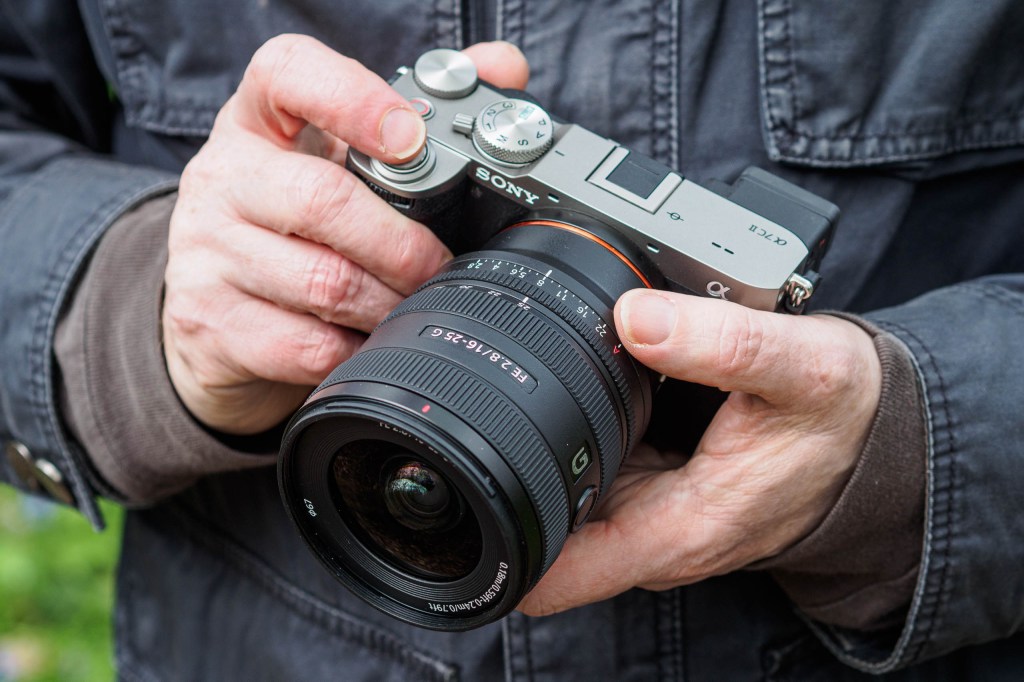
I found the lens to be a nice match in terms of size and balance to the Alpha A7C II body that Sony provided for testing. But it’s also a very agreeable companion to the heftier A7R V.
Anyone who’s used one of Sony’s recent G-series lenses will feel instantly at home with the design and controls. It employs the same lightweight yet robust-feeling plastic outer casing, with a metal mount that’s surrounded by a rubber seal to protect the camera. The three control rings – aperture, zoom, and manual focus – are all slightly different in diameter, with the zoom ring falling perfectly to hand while you’re shooting.
Closer to the camera, the aperture ring is marked from f/2.8 to f/22 in 1/3-stop steps. A switch on the side of the lens selects between clicked operation for photographers, and smooth adjustments for video.
The aperture ring also has an A position that transfers control to the dials on the camera. Accessing this position requires a bit more force and a larger turn of the ring, so you’re unlikely to switch in or out of it by accident. Unlike some of Sony’s other recent lenses, there’s no Iris Lock switch, but I can’t say I missed it.
There’s also just a single Focus Hold button placed on the side of the barrel for landscape-format use. In contrast, many other Sony lenses have a second placed on the top for portrait format shooting. I’m not sure of the rationale behind this, as there’s clearly space for one here. A conventional AF/MF focus mode switch rounds off the physical controls.
Sony FE 16-25mm F2.8 G: Autofocus
When it comes to autofocus, the 16-25mm is every bit as accomplished as we’d expect from a modern Sony lens. Focusing is very fast indeed and essentially silent. Videographers will also be pleased to find that focus breathing isn’t much of a problem. The angle of view narrows slightly on focusing closer, but it’s unlikely to spoil focus-pull effects unless you’re covering an extreme range.

Click on any sample image to see the full-resolution version
Manual focusing is also pretty much impeccable. The focus ring is really smooth in operation, and extremely responsive. As usual for Sony, there are neither hard end stops nor marked focus distances, instead switching to MF brings up a basic distance scale in the viewfinder. Rotating the ring automatically engages magnified view for the most accurate results, but you can disable this in the camera menu if you prefer.
Sony FE 16-25mm F2.8 G: Performance
At the start of this review, I posed the question of why photographers might buy this Sony FE 16-25mm F2.8 G. Examining the hundreds of real-world images I shot while testing the lens certainly provides one plausible answer – because it’s sharp. Really sharp.

This is a lens that gives clean, highly detailed images almost regardless of the focal length and aperture setting. Even if you stare close-up onscreen at files shot at f/2.8 on the 61MP A7R V, it looks strikingly sharp in the centre of the frame. Some pixel-level radial smearing can be visible in the extreme corners, particularly at large apertures and towards the wide end of the zoom, but it’s really not going to spoil your images.
Stop down to f/5.6, and everything looks stunningly sharp from corner to corner. Diffraction comes into play at about f/11, and then blurs the entire image noticeably at the minimum aperture of f/22.
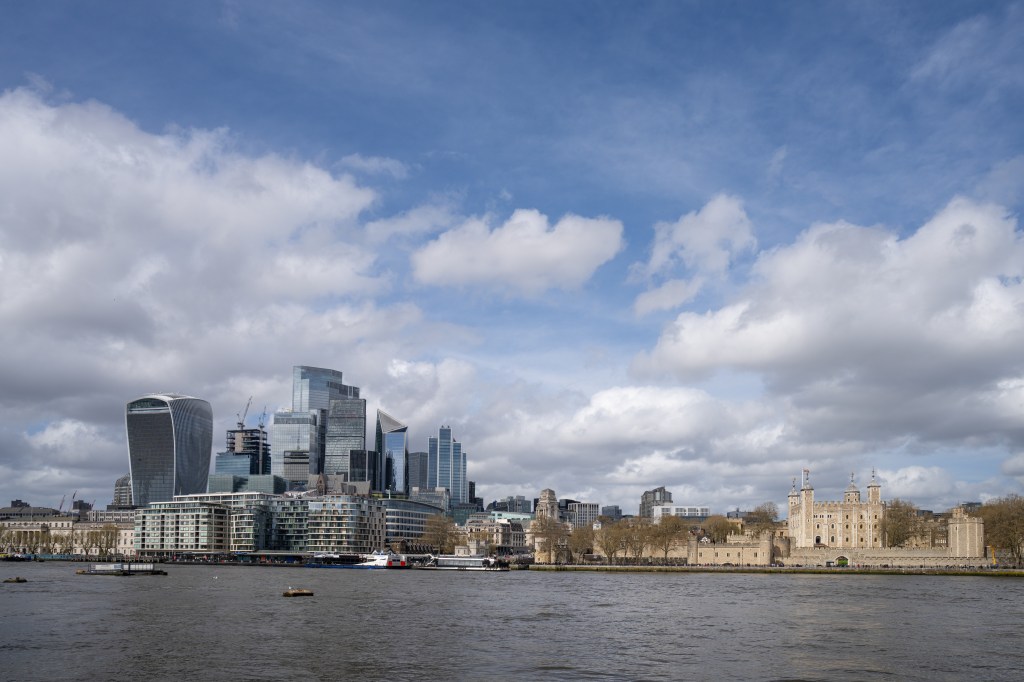
Sony has achieved this impressive performance by using a thoroughly modern lens design, in which curvilinear distortion is corrected in software. Uncorrected raw files show barrel distortion all the way through the zoom range, which as we’d expect is most extreme at the 16mm setting.
This distortion is corrected automatically both in-camera and in Sony’s Imaging Edge Software. However, users of Adobe software will likely have to wait little while after the lens’s launch for the requisite profile to appear. Once that’s released, they’ll have nothing to worry about either.

Colour fringing from lateral chromatic aberration is also normally corrected in software. Even if you decide to disable in-camera compensation (and there’s no obvious reason to do so), it’s really very minor.
Likewise, if you disable vignetting compensation, then some corner darkening is visible in evenly toned scenes when shooting at f/2.8. But it’s not visually unpleasant, and is pretty much unnoticeable by f/5.6.

The lens also behaves really well when shooting into the light. There’s barely any loss of contrast or ghosting artefacts visible when bright light sources are within the frame. Stop all the way down to f/16, and you can get reasonably well-defined sunstars too.
While it’s possible to shoot at extremely close focus distance, the working distance from the lens to your subject becomes very short indeed. At the 16mm position, it’s only about 6cm. This means that you often just tend to end up getting in your own light and casting shadows on the subject.

Personally, I usually preferred the results from moving back and zooming in, which still gives a striking wideangle perspective.
Sony FE 16-25mm F2.8 G: Our Verdict
On the face of it, there’s a great deal to like about the Sony FE 16-25mm F2.8 G. It’s relatively small and light for a large-aperture full-frame wideangle zoom, has a comprehensive set of controls, and is weather-sealed for outdoor shooting. Most importantly, it delivers consistently excellent image quality.
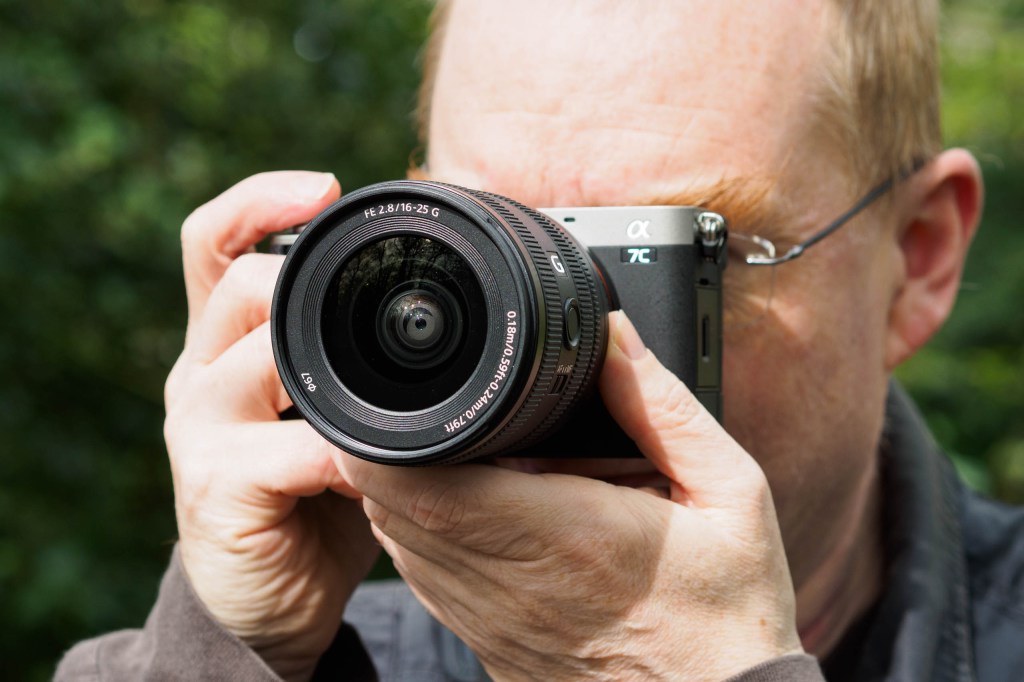
Of course, the big compromise is the zoom range, which is very limited indeed. I suspect many landscape photographers would be happy leaving a 16-35mm zoom on their camera much of the time, but I can’t see that here. I found it really frustrating, and creatively limiting, as the sole lens I had with me. Most users would, I think, spend a lot of time swapping this lens back and forth with a standard zoom.
There’s also a real question over the value proposition in a world where the Sigma 16-28mm F2.8 DG DN and the Tamron 17-28mm F/2.8 Di-III RXD already exist for two-thirds of the price. We were impressed by the image quality of both of these lenses when we reviewed them. The Sony lens does provide you with an aperture ring, though, and I’d probably feel happier with its weather resistance.

Ultimately, Sony users have a lot of choice when it comes to ultra-wide zooms, and this lens brings another, slightly niche option to the table. It won’t be for everyone, and personally, I’d go for a 16-35mm f/4 instead. But if its feature set fits your specific needs, you can rest assured it’ll deliver excellent results.

Follow AP on Facebook, Twitter, Instagram, YouTube and TikTok.
Sony FE 16-25mm F2.8 G full specifications:
| Price | £1250 |
| Filter Diameter | 67mm |
| Lens Elements | 16 (3 Asph, 1 ED Asph, 3 ED) |
| Groups | 13 |
| Diaphragm blades | 11 |
| Aperture | f/2.8 – f/22 |
| Minimum focus | 18-24cm |
| Length | 91.4mm |
| Diameter | 74.8mm |
| Weight | 409g |
| Lens Mount | Sony E (full frame) |
| Included accessories | Caps, hood |

